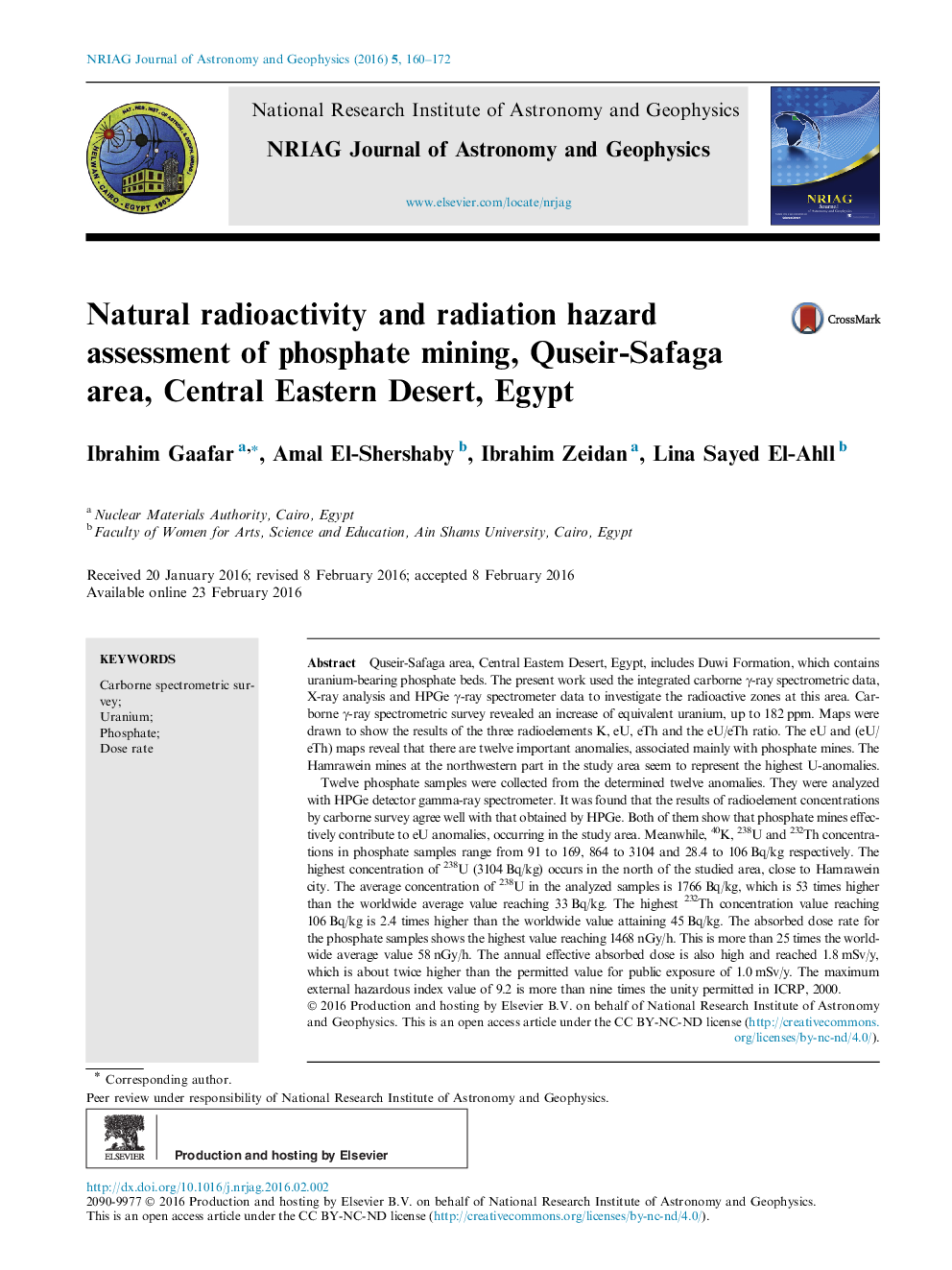| Article ID | Journal | Published Year | Pages | File Type |
|---|---|---|---|---|
| 1780563 | NRIAG Journal of Astronomy and Geophysics | 2016 | 13 Pages |
Quseir-Safaga area, Central Eastern Desert, Egypt, includes Duwi Formation, which contains uranium-bearing phosphate beds. The present work used the integrated carborne γ-ray spectrometric data, X-ray analysis and HPGe γ-ray spectrometer data to investigate the radioactive zones at this area. Carborne γ-ray spectrometric survey revealed an increase of equivalent uranium, up to 182 ppm. Maps were drawn to show the results of the three radioelements K, eU, eTh and the eU/eTh ratio. The eU and (eU/eTh) maps reveal that there are twelve important anomalies, associated mainly with phosphate mines. The Hamrawein mines at the northwestern part in the study area seem to represent the highest U-anomalies.Twelve phosphate samples were collected from the determined twelve anomalies. They were analyzed with HPGe detector gamma-ray spectrometer. It was found that the results of radioelement concentrations by carborne survey agree well with that obtained by HPGe. Both of them show that phosphate mines effectively contribute to eU anomalies, occurring in the study area. Meanwhile, 40K, 238U and 232Th concentrations in phosphate samples range from 91 to 169, 864 to 3104 and 28.4 to 106 Bq/kg respectively. The highest concentration of 238U (3104 Bq/kg) occurs in the north of the studied area, close to Hamrawein city. The average concentration of 238U in the analyzed samples is 1766 Bq/kg, which is 53 times higher than the worldwide average value reaching 33 Bq/kg. The highest 232Th concentration value reaching 106 Bq/kg is 2.4 times higher than the worldwide value attaining 45 Bq/kg. The absorbed dose rate for the phosphate samples shows the highest value reaching 1468 nGy/h. This is more than 25 times the worldwide average value 58 nGy/h. The annual effective absorbed dose is also high and reached 1.8 mSv/y, which is about twice higher than the permitted value for public exposure of 1.0 mSv/y. The maximum external hazardous index value of 9.2 is more than nine times the unity permitted in ICRP, 2000.
